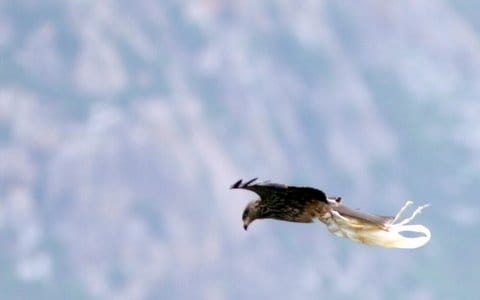We all have heard of the dangers of plastic – about how animals can ingest the plastic and can then die due to indigestion. But there are several other ways plastic can endanger wildlife, too.
Sometimes, the dangers are seen quite dramatically. Let me illustrate with two examples that I saw. At Nandi Hills, I saw this Black (or Common) Kite, with a big plastic bag entangled in its talons. It was flying about, desperately trying to get the bag off, but in vain:

Black Kite with Plastic Caught in Talon Nandi Hill
The Kite could not chase any prey while the bag was caught in its talons… I do hope that it was able to extricate itself speedily, otherwise, starvation was the fate it would face.
On another nature trail recently, my friends and I found, in the rain, that this carelessly thrown plastic cup was full of rainwater….and two insects which are called Bombardier Beetles, were swimming, literally, for their lives.
I video’d them and then rescued them… I hope this video will help raise awareness, and make each one of us stop to think how our carelessness could cause lives. Let’s be very careful what we throw away, and how we dispose of plastic!
Related Articles
The rock on which Bengaluru sits
Bird-beaks reveal eating habit!
Yes or no to plastic bags?
From anti-plastic steps to zero waste management
100% correct. why the govt itself is still distributing plastic. the milk by KMF is supplied in very plastic sachets. they might say it is pvdc coated or whatever but in essence it is plastic . why they can’t find a better substitute or do tetra pack. Like we are calling for natural[herbal] hair dye which can not be done with out a chemical[ non herbal] para phenelenediamine a fixative of its class.Like wise i think plastic is an inevitable evil. but its indiscriminate use can be minimised, .